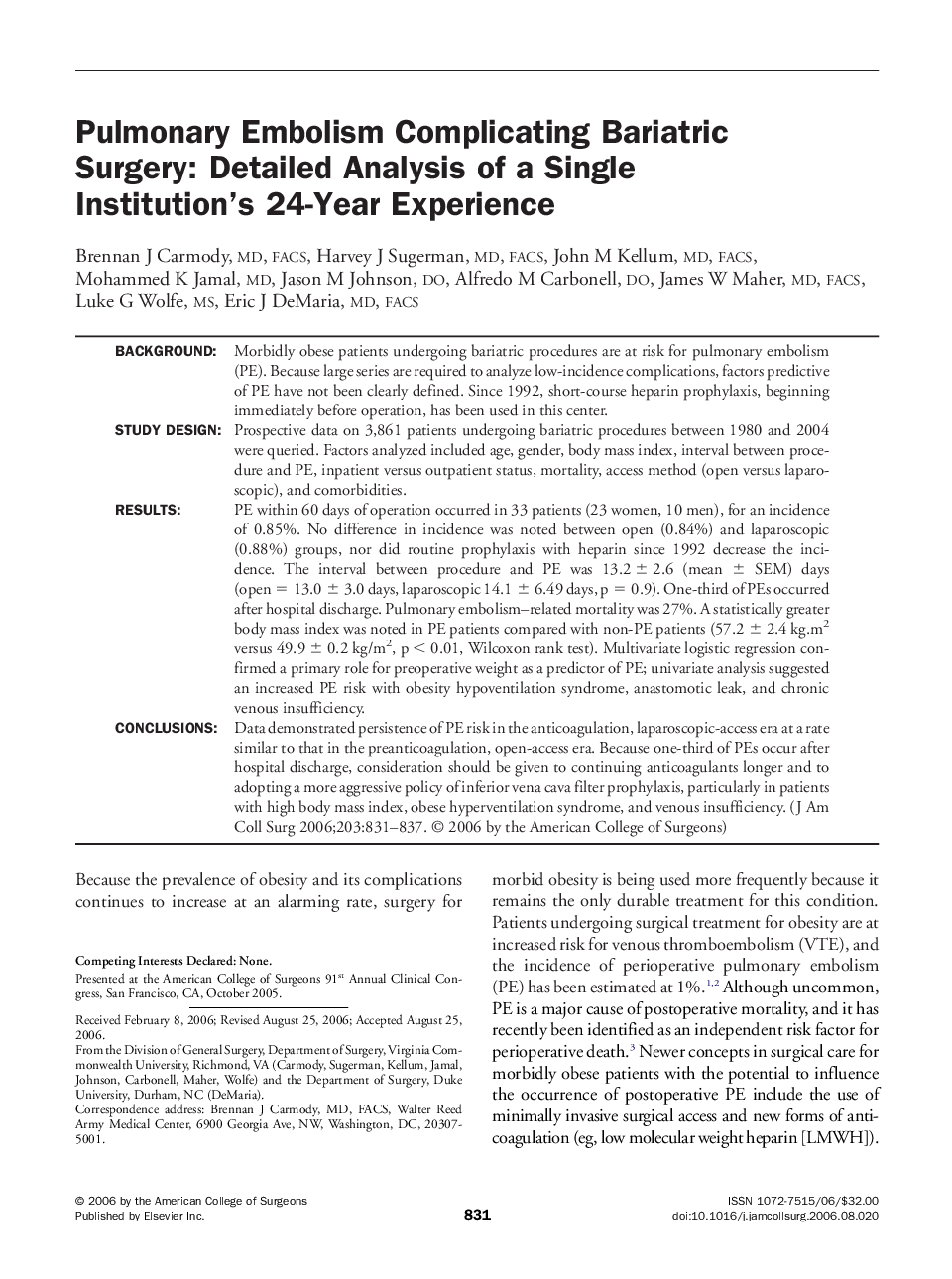| کد مقاله | کد نشریه | سال انتشار | مقاله انگلیسی | نسخه تمام متن |
|---|---|---|---|---|
| 4295911 | 1612331 | 2006 | 7 صفحه PDF | دانلود رایگان |

BackgroundMorbidly obese patients undergoing bariatric procedures are at risk for pulmonary embolism (PE). Because large series are required to analyze low-incidence complications, factors predictive of PE have not been clearly defined. Since 1992, short-course heparin prophylaxis, beginning immediately before operation, has been used in this center.Study designProspective data on 3,861 patients undergoing bariatric procedures between 1980 and 2004 were queried. Factors analyzed included age, gender, body mass index, interval between procedure and PE, inpatient versus outpatient status, mortality, access method (open versus laparoscopic), and comorbidities.ResultsPE within 60 days of operation occurred in 33 patients (23 women, 10 men), for an incidence of 0.85%. No difference in incidence was noted between open (0.84%) and laparoscopic (0.88%) groups, nor did routine prophylaxis with heparin since 1992 decrease the incidence. The interval between procedure and PE was 13.2 ± 2.6 (mean ± SEM) days (open = 13.0 ± 3.0 days, laparoscopic 14.1 ± 6.49 days, p = 0.9). One-third of PEs occurred after hospital discharge. Pulmonary embolism–related mortality was 27%. A statistically greater body mass index was noted in PE patients compared with non-PE patients (57.2 ± 2.4 kg.m2 versus 49.9 ± 0.2 kg/m2, p < 0.01, Wilcoxon rank test). Multivariate logistic regression confirmed a primary role for preoperative weight as a predictor of PE; univariate analysis suggested an increased PE risk with obesity hypoventilation syndrome, anastomotic leak, and chronic venous insufficiency.ConclusionsData demonstrated persistence of PE risk in the anticoagulation, laparoscopic-access era at a rate similar to that in the preanticoagulation, open-access era. Because one-third of PEs occur after hospital discharge, consideration should be given to continuing anticoagulants longer and to adopting a more aggressive policy of inferior vena cava filter prophylaxis, particularly in patients with high body mass index, obese hyperventilation syndrome, and venous insufficiency.
Journal: Journal of the American College of Surgeons - Volume 203, Issue 6, December 2006, Pages 831–837